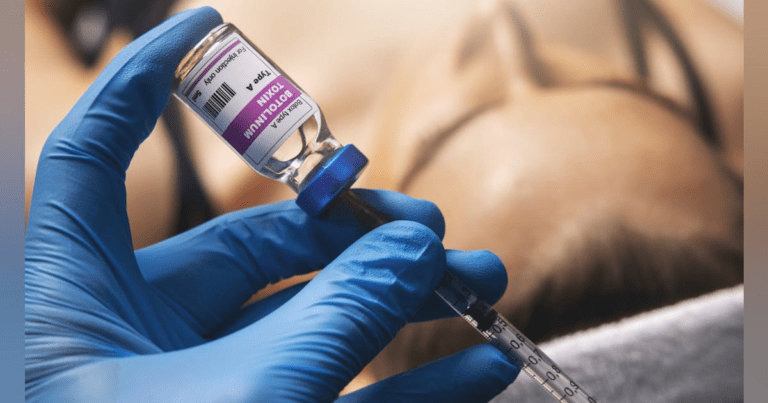Kansas was the first state to pass legislation allowing registered dental hygienists to administer the neurotoxin, commonly known as Botox, in 2022. The neighboring state of Oklahoma followed soon after. Since these changes, hygienists in these states are able to treat everything from cleft lip to crow’s feet and more.
With their comprehensive training in dental injectables and knowledge of head and neck anatomy, these types of treatments make sense in the dental chair, and who better to provide them than dental hygienists? A Botox appointment is quick, productive, relatively painless and, frankly, the kind of dental appointment patients don’t want to miss.
One of the most useful applications of Botox as it relates directly to dentistry is how we can use it to reduce the intensity of sleep bruxism. With a few injections into the gums, patients can experience sleep bruxism relief in as little as two weeks. Relief from years of jaw pain and constant broken fillings can be a transformative experience for patients. As more states pass legislation, we can expect patients to seek this treatment from health professionals.
But what if a patient’s sleep bruxism isn’t just parafunctional and is actually a symptom of obstructive sleep apnea (OSA)? Is it responsible to treat a patient with Botox in the gums?
To answer this, we need to understand the relationship between sleep bruxism and OSA. According to a study published by Journal of Clinical Medicine, a positive association was observed in patients with mild to moderate OSA and sleep bruxism. It states, “SB [sleep bruxism] Activity protects against OSA by protruding the mandible and restoring airway patency.”
A study documented in PubMed supports the findings from the Journal of Clinical Medicine and claims, “Improving OSAs can prevent SB exacerbations.” According to Dr. Alan Stein, a dentist at New Jersey Sleep Apnea Solutions in West Orange, New Jersey, “It’s important to screen these patients for OSA because bruxism could be masking the true problem. If a patient is gurgling, grinding, or clenching as a result of inadequate oxygenation from OSA, the neurotoxin will help the symptom, but it will do nothing to stop what is causing the real problem: the OSA.”
You may also be interested
The Botox Buzz: What Dental Hygienists Need to Know
Dental Hygienists and Botox: It’s Complicated
Botox for sleep bruxism
This article aims to answer the question of whether it is safe to administer Botox for sleep bruxism in patients who may have OSA and, in doing so, to help hygienists be safe and
inject confidence in this popular and impressive way.
Knowing how to perform a comprehensive examination for OSA is vital and can be easily done in the dental chair. A widely used screening tool for hygienists is the Epworth Sleepiness Scale [ESS]. This questionnaire is applied in sleep medicine as a screening tool for OSA and other sleep disorders. In the ESS, patients answer questions that indicate whether they experience excessive sleepiness. The answers are summed to give a numerical value that indicates how likely or unlikely the patient is to have a sleep disorder.
Another simple way to screen patients is to assess dental health, specifically looking at any wear on the incisors. We know that incisal wear is strongly associated with OSA and that often the severity of incisal wear correlates with the severity of OSA.
Another screening tool that can be used is the Mallampati classification system. Mallampati scores assign a Roman numeral value to a person’s airway based on how much of the upper airway is visible when their tongue protrudes without vocalization. Studies have shown that a high Mallampatti score is an independent predictor of OSA. Dr. Stein goes on to say, “All patients should be screened for OSA regardless of whether they know they have snored,” adding, “I have no problem treating OSA patients with a Botox pick-up before a sleep exam. Let’s make sure we do this test!”.
Educating your non-clinical team on the “why” of the screening process, as well as how it is done, will ensure that consistent language is used throughout your practice. Having conversations with patients when they schedule appointments or including an ESS in their health history will prepare them for any chairside dialogue. These systems will also help set your office apart as a place committed to finding the root cause of problems, which in today’s fast-paced healthcare world is something many patients want.
It is safe to treat a patient with suspected OSA with a Botox massager before a sleep test. However, be sure to educate patients about the relationship between OSA and sleep bruxism and why it is important to be screened. Train and calibrate all team members on how to talk to patients about OSA and sleep bruxism and develop a screening system that works for your practice.
Talk to patients about the benefits of sleep testing and learn when to refer to the patient’s primary care physician or a sleep specialist. That being said, knowing that you are safe to get these injections should take the guesswork out of the equation the next time your patient asks you about Botox for bruxism!
Katie Barrer, RDH, is a certified aesthetic injector. She elevates her traditional hygiene skills by incorporating Botox and dermal filler into her practice, seeing them as key ingredients in boosting patients’ confidence and improving their overall dental health and function. He is a faculty member of the American Academy of Facial Esthetics and looks forward to contributing to the advancement of dental hygiene by educating other hygienists and healthcare professionals. Follow her on instagram @theRDHinjector or email [email protected].


